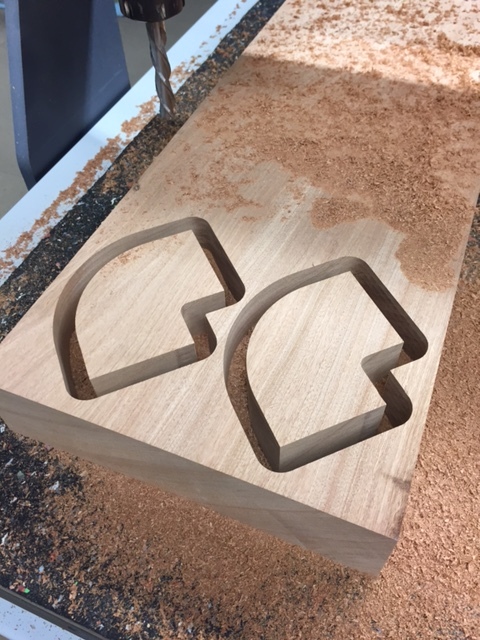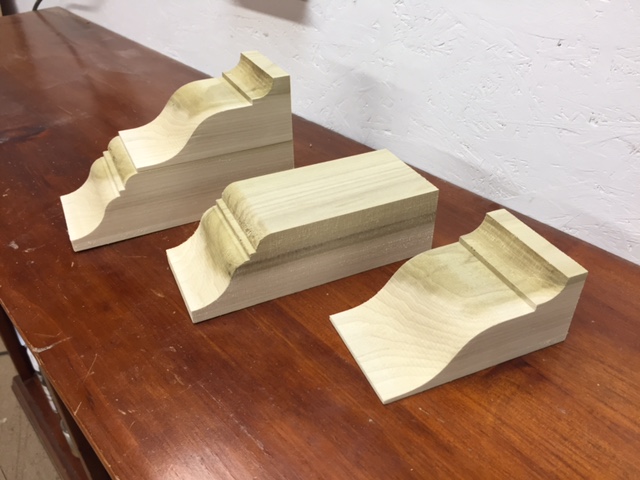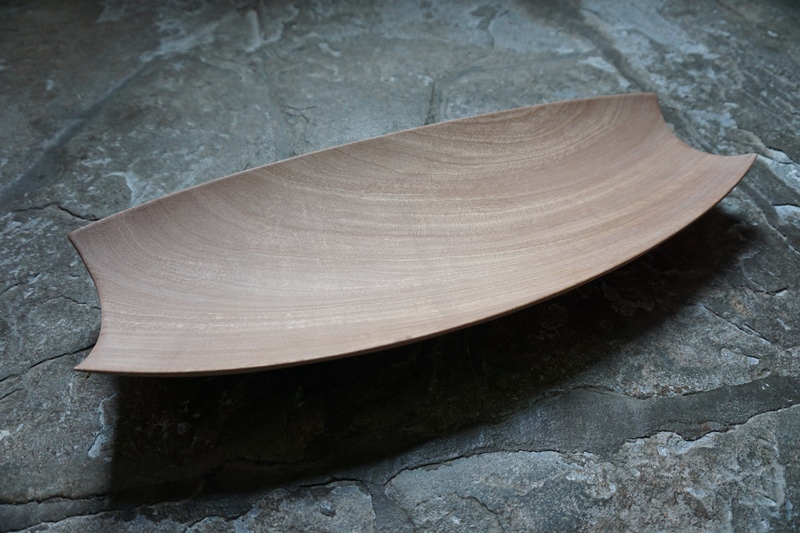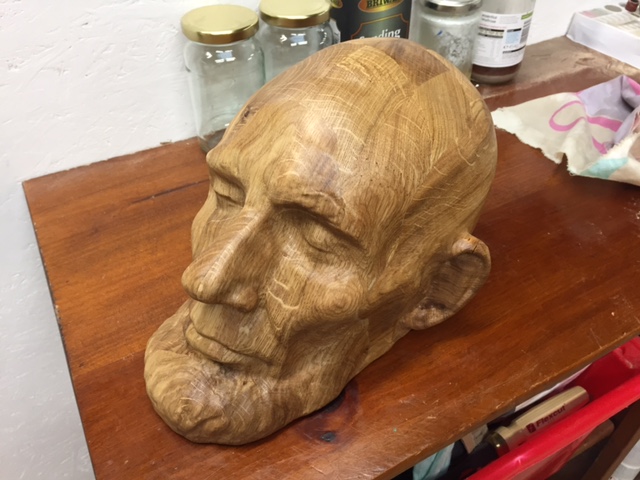I cut a lot more 2D components for Tom P who I share the barn with with week. Although these are mostly simple shapes they are interesting to cut as they are typically 50mm (2 inches) or deeper material so present interesting challenges with deep cutting and part hold-down. I mostly use a 1/2 inch tool for these and impressively the vacuum hold-down on the Exel CNC has been up to all challenges so far with these and everything else I've thrown at it. Another more complex part I made for Tom was a corbel, this was 120mm thick so I cut it in 2 x 60mm pieces which could be glued up as shown below. I used the very efficient Moulding Toolpath in the Aspire software to create the toolpaths for these with 1/2 inch diameter ballnose for the shaped areas and a 1/2 inch diameter end-mill for the flats and to cutout.
I also had chance to work on a 2-sided project this week to create a decorative dish. These projects require you to cut one side, then flip the material and cut the other. I designed an elongated partly oval shaped dish with convex cutouts at each end. On the back I created a gentle ripple effect which tapered towards the middle of the dish. This was cut into a 60mm thick piece of Sapele wood. I used an beta-copy of Vectric Aspire V9 software which has an excellent new feature to help work with both sides of something being cut with a 2-sided setup. I cut the first side (the inside of the bowl). Then to locate the second side I used a sheet of MDF as a base on the machine and cut dowel locations into it, which corresponded to some I had already cut the top side. These ensure the two sides align. Everything with both the CNC and the software setup worked perfectly. You can see a couple of images below and a lot more in the Ripple Dish Gallery. This has yet to have a finish applied but has sanded up very nicely.
I also did final finish on some Simple Signs I've been cutting for friends and family and did the final hand-work and some Danish Oil on Abraham Lincoln, more pictures on the process to make this in the Abraham Lincoln Death Mask gallery.
The other less fun jobs I took care of this week was setting up a tool library in the software, tidying and unpacking everything and finishing the office, so now I have a good space to work on my new PC which is as yet unused. Now these mundane things are done I'm looking forward to moving on with some more interesting projects in my temporarily organised environment.





















